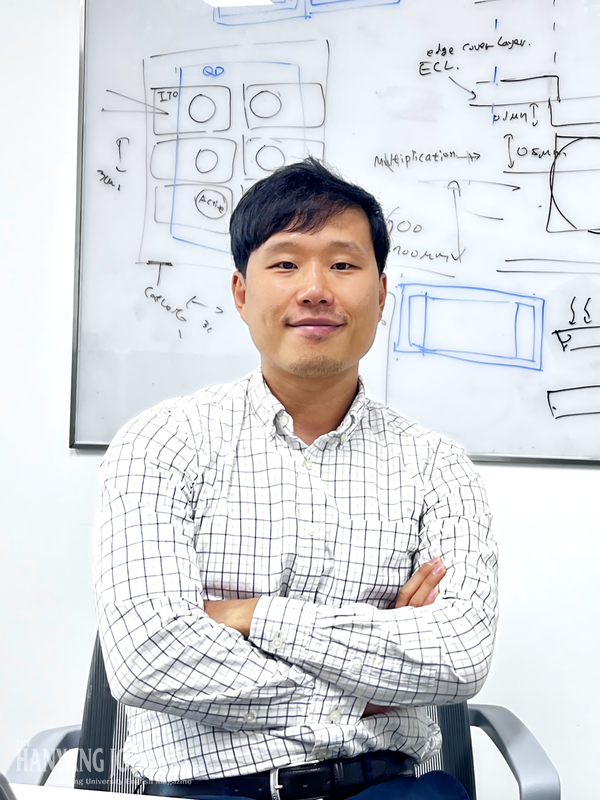
Lee Ji-won, a professor in the Department of Photonics and Nanoelectronics a t Hanyang University (HYU), has developed the world’s first low-cost and high-resolution shortwave infrared (SWIR) sensors in partnership with a research team at the Interuniversity Microelectronics Center (IMEC) in Belgium. This achievement was published on August 14, 2023 in Nature Electronics, a prestigious academic journal of the field.
Q. Please provide a brief overview of your main research field.
A. My primary research area is image sensors. In particular, I have been concentrating on infrared cameras. Infrared light, invisible to the naked eye, finds utility in numerous fields based on its wavelength. It includes near-infrared rays (NIR) for smartphone face ID functions, SWIR for military sectors, and longwave infrared for body temperature measurements.
Q. Can you explain the SWIR camera and the new technology you have developed?
A. SWIR cameras offer superior visibility in long-distance and lowlight conditions, along with highresolution imaging capabilities in foggy or dusty environments. Furthermore, they can be positioned beneath a display, addressing the ʻbig notch’ issue in devices like the iPhone X. However, SWIR cameras have been economically unfeasible, limiting their applications primarily to military purpose. Inexpensive options, on the other hand, suffer from reduced image quality. We have introduced a novel device structure that markedly reduces sensor noise while maintaining costeffectiveness. This was accomplished by integrating pinned photodiodes into infrared cameras and incorporating nanometer-sized semiconductor components (quantum dots) with oxide thin-film transistors.
Q. What contributed to the successful development of this accomplishment?
A. I worked for four years at the IMEC before joining HYU. This experience provided me with exposure to state-ofthe-art technology and experts across various fields, which served as a crucial ʻfriction’ for inspiration.
Q . Were there any challenges encountered during the development process?
A. The primary challenge was the need to integrate knowledge from diverse fields to create a single device. To this end, experts from various disciplines joined forces. This collaborative effort is evidenced by the extensive list of 19 co-authors, highlighting that this study is the product of teamwork and interdisciplinary collaboration.
Q. What advice would you offer to HYU students aspiring to pursue related fields?
A. Identifying inconveniences is the first step towards technological advancements. Hence, I would advise students to explore their interests actively in image sensors and camera technology, identify real-world inconveniences and consider how they can contribute to the innovations. For instance, I challenged my students with tasks like ‘take the worst photo possible’ to make them notice disturbances in everyday life.

